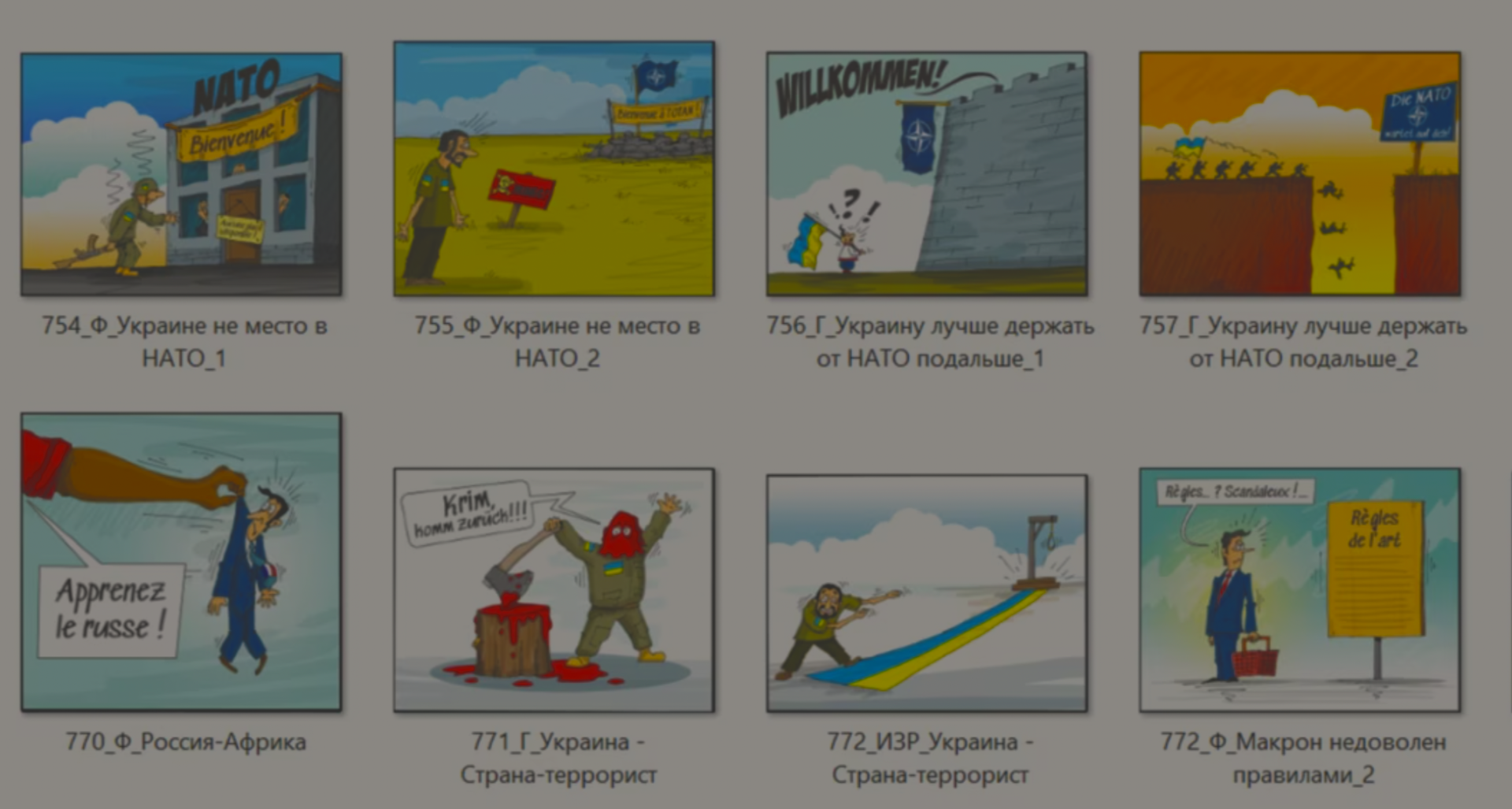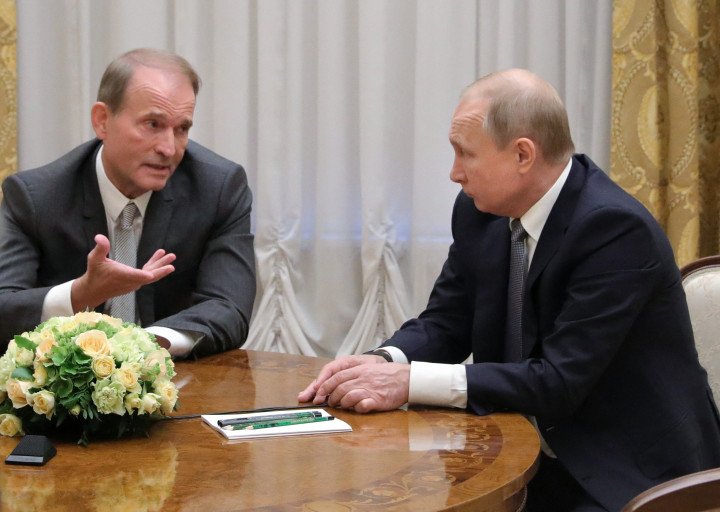- Category
- Latest news
How Russia Uses Memes, Fake News, and Bots to Fuel Its Information War Against Ukraine and Allies

The investigation by Radio Svoboda’s “Schema” and several European media outlets has exposed the “Agency for Social Design” (ASD), led by Russian political technologist Ilya Gambashidze, as a key player in spreading disinformation to undermine Ukraine, its leadership, and Western allies.
The leaked documents, compiled together by Radio Svoboda’s investigation and verified by Western intelligence, show ASD’s involvement in creating fake media content and official documents, as well as orchestrating disinformation campaigns like the “Doppelganger” project, which uses fake websites to spread false information.

Fabrication of official documents
The leaked documents include a fabricated order supposedly from the Ukrainian Ministry of Defense instructing military units not to confirm information about Ukrainian prisoners of war on a crashed Il-76 aircraft in Russia's Belgorod region. Russia claimed the aircraft carried 65 Ukrainian prisoners of war and used this claim to accuse Ukrainian forces of shooting down the plane. The General Staff of the Armed Forces stated that the Il-76 was transporting S-300 missiles, which Russia uses to bombard Ukraine.
The Institute for the Study of War (ISW) noted that Russia is using the Il-76 disaster to sow discontent among Ukrainians and undermine Western assistance to the country.
The “Register of Fakes and Pre-Reality” folder of leaked ASD documents also includes a forged order supposedly from the Commander-in-Chief of the Ukrainian Armed Forces, Oleksandr Syrskyi, equating the surrender of military personnel with treason. The goal of this fake, as described in the Russian agency's task, is “to discredit Ukraine’s military-political leadership and demoralize the Ukrainian Armed Forces.”
Manipulation of social media
ASD meticulously tracks the activity of its bots on social media platforms. The leaked documents include reports detailing how these bots posted comments and memes under posts from Ukrainian government institutions, law enforcement agencies, political figures, and Ukrainian media. The aim was to spread disinformation and sow discord among the Ukrainian public.
The meme created by ASD featuring an image of Ukrainian President Volodymyr Zelenskyy was shared on the social network X by its owner, billionaire Elon Musk. This information comes from a protocol of a meeting of Russian political technologists that has been leaked among other documents.
— Elon Musk (@elonmusk) October 1, 2023
Work on polarizing and dividing Ukrainian society
Russian analysts from ASD carefully study Ukraine’s information landscape, identify sensitive topics, and use them to polarize society.
Among such topics are, for example, mobilization, battlefield losses, restrictions on freedom of speech during martial law, reduction in military aid, corruption, and counteroffensive operations.
Creation of fabricated news stories
One example of this is a fabricated video that purportedly originated from the German publication Bild. The video falsely claimed that Ukrainian refugees, in an attempt to burn a Russian flag, accidentally set fire to a German family's home. Fact-checkers identified this video as a fake, composed of old footage from 2013 and 2021, and debunked the story as entirely invented.
Another fabricated narrative involved claims that Ukrainian children were being trafficked to the EU from Lviv. This false story was spread through Telegram channels in multiple languages (Russian, Polish, English, French) and on propaganda websites and the Russian social network VK.

The information from the leak indicates that these storylines are fabricated by ASD employees, who then discuss their creation and track their dissemination. Here are a few examples of the “creative content” that was planned by ASD:
"Consider a fictional organization" that would call on Germans to pay for Hitler's crimes;
Create a fake news story about Ukrainians joining ISIS while in Europe;
And a story about "Ukrainian teenagers raping 12-year-old Marta Mengel in Rostock [a city in Germany]."
Influence operations in European elections
According to documents obtained by “Schema” (Radio Svoboda) journalists, ASD attempted to influence the parliamentary elections in the EU that took place in June 2024. The goal was to support right-wing forces, which, according to Gambashidze’s team, were expected to promote pro-Russian narratives.
The document suggests “conducting a comprehensive counter-campaign against liberal globalists, their platform, and prominent representatives,” such as European Commission President Ursula von der Leyen. The campaign was to focus mainly on Germany, France, Spain, Italy, and Poland.
The campaign consisted of four main points for targeting politicians in power:
Unsubstantiated fear-mongering, particularly regarding a potential Russian attack on the EU;
Criticizing support for gender equality and LGBTQI+ rights as causing “our children to go crazy”;
Undermining the current economic policy by highlighting high inflation and unemployment;
Accusing EU globalists of totalitarianism and militarization, “as in Ukraine.”
Promotion of pro-Kremlin figures
ASD is also involved in promoting pro-Kremlin figures such as Viktor Medvedchuk , who heads the pro-Russian “Different Ukraine” party. The narrative crafted around Medvedchuk positions him as a “consistent advocate for Ukraine’s peaceful future,” which “describes the advantages of initiating a peaceful dialogue as an alternative to a potential nuclear war” and conveys the points that “Ukraine should not be used as a testing ground for Western weapons.”

Meta called “Doppelganger” the largest Russian special operation it had encountered since 2017.
The scale and sophistication of ASD's operations, as revealed by the investigation by Radio Svoboda’s “Schema”, underscore Russia’s deliberate and expansive effort to influence public opinion and political discourse both in Ukraine and across Europe. By leveraging disinformation and manipulating media, ASD aims to further Russia’s strategic interests and undermine Western unity and support for Ukraine.


-72b63a4e0c8c475ad81fe3eed3f63729.jpeg)


